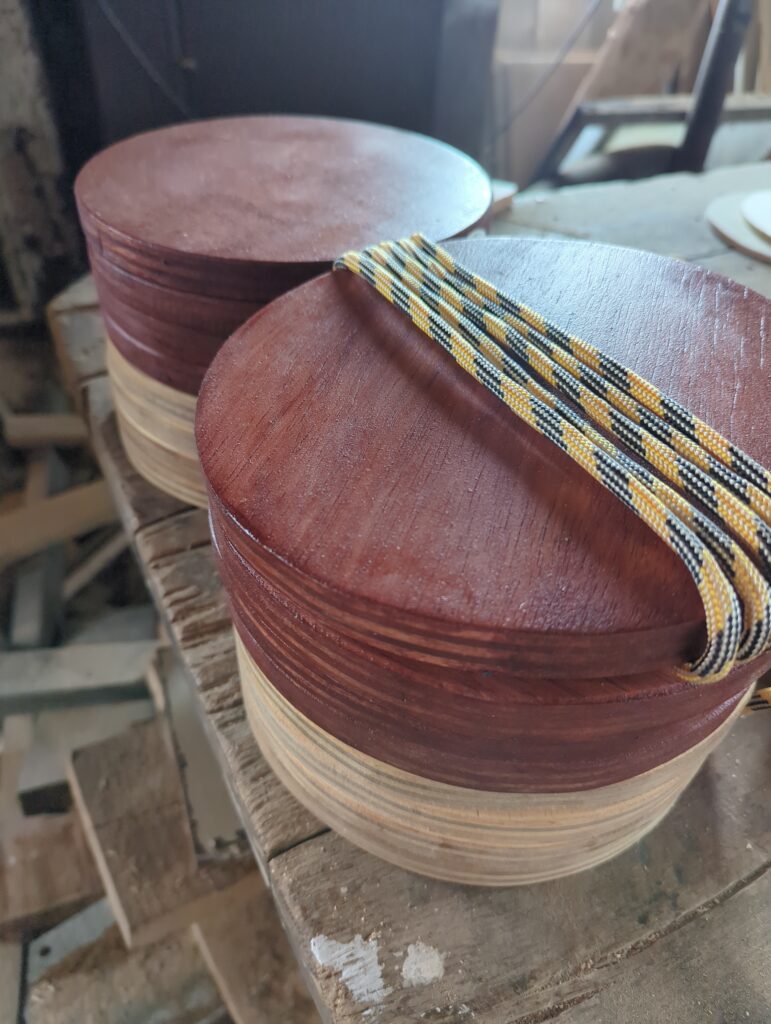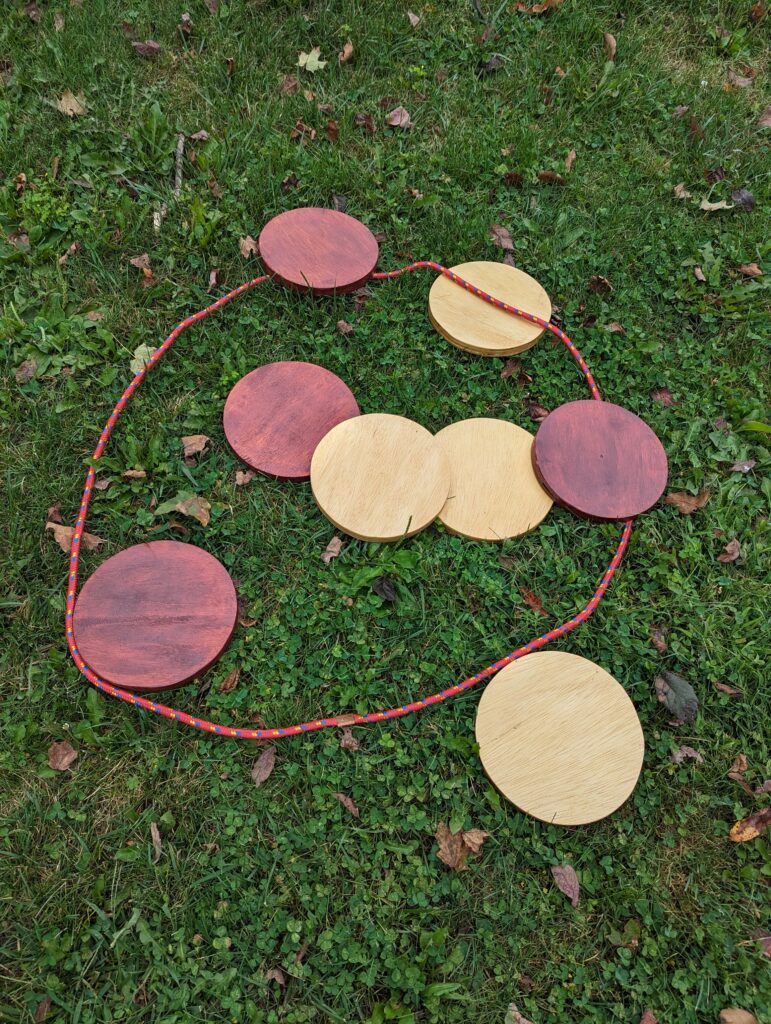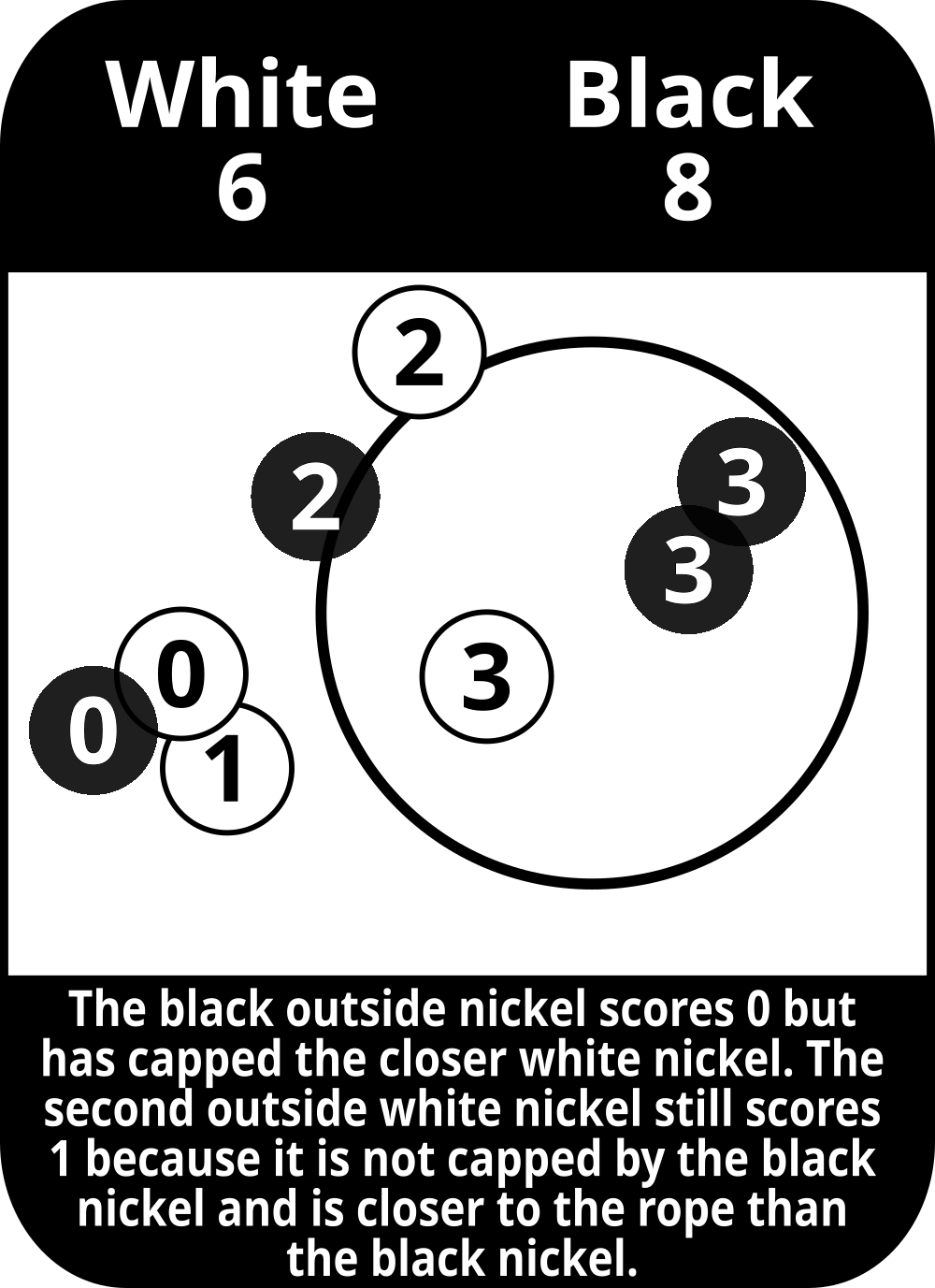
The Original
GiegerGames
Yard Game

Wooden Nickels Unique Yard Game (Like Cornhole, Shuffleboard, Horseshoes) | Handcrafted lawn and beach game | Play casual or Tournament
$75.00
Buy nowFree Shipping!
🪚 Hand Crafted



Play Anywhere



How to Play
ℹ️ Overview
Wooden Nickels is the original handcrafted GiegerGames yard game that is hard to master but easy to learn since it incorporates elements that will feel familiar to those who have played classic games like Horseshoes, Cornhole, Lawn Darts, or Shuffleboard. Players take turns trying to throw (or roll, or flip) wooden ‘nickels’ into a rope target, but player beware because your opponent may cancel your points by capping or tapping your nickel out of play – or the target itself may be strategically adjusted to leave your nickels behind! Wooden Nickels is perfect for all occasions thanks to it’s extreme portability, quick game style, and suitability for play on a variety of outdoor surfaces.
💼 Equipment
- 🟤 8 Wooden Nickels
- 🪢 2 Circular Ropes
- 👜 1 Carrying Bag
- 📋 1 Laminated Rule Sheet
📐 Setup
Place the ropes on the ground approximately 25 feet apart. The ropes should be spread out in a mostly circular pattern on each side:

🎯 Object of Game
The first team to score exactly 30 points after all nickels are thrown is the winner.
▶ Gameplay
- Flip a Jefferson Nickel to determine which team throws first. At the start of each subsequent throwing round, the team with the highest score will throw first. If the score is tied the team which threw first in the last throwing round throws the first nickel
- Nickels are thrown from one side of the playing area to the other in alternating team order until all nickels are thrown (This completes a single “Throwing round”)
- Nickels may be thrown in any way that the player chooses
- Player must not step past front of rope until the throwing round is complete (players may not inspect current situation – they must rely on their teammate or intuition)
- The rope circles can be adjusted by either team prior to the beginning of each round, but not after the first nickel is thrown
- If a player chooses not to throw a nickel, they must drop it in the rope circle on their end of play area
- After all nickels are thrown, the nickels are scored, and the next throwing round begins
- Ropes may be adjusted each round, but only prior to any nickels being thrown
- Play continues until at least one team reaches exactly 30 points at the end of a throwing round
- If a team exceeds 30 points at the end of a throwing round, the team’s score is reduced to 20 at the start of the next throwing round
- If both teams score 30 points in the same throwing round, see Overtime Rules below
🔢 Scoring
Nickels score in the following manner after all disks are thrown:
3 Points
Each nickel entirely inside rope (Touching rope is OK) scores 3 points.
2 Points
Each nickel that is on top of the rope or under the rope (by any amount) scores two points.
1 Point
The team with the nickel closest to the rope circle (touching rope is OK) scores one point for each of their nickels that are closer to the rope than the other team’s closest nickel.
If both teams have nickels touching the outside of the rope, each team will score 1 point for each nickel touching the rope. (In this scenario, only nickels touching the rope will score)
🧢 Capping
A nickel that is “capped” (under another an opponent’s nickel by any amount) scores 0 points – regardless of its location.
Capped nickels do not count when determining which nickels are closest to the rope.
👩🏫 Scoring Examples






⌛ Overtime Rules
Overtime consists of two consecutive throwing rounds, after which, the team with the most points wins. If teams are still tied after two throwing rounds, repeat overtime.
📋 Clarifications
- During the course of play, it is common that the rope circle is moved/deformed. This is normal and part of regular game-play. It is entirely possible that a nickel that would have scored points no longer scores because the rope is moved during the throwing round.
- Players must wait until the previously thrown nickel is at rest before throwing their next nickel.
- When scoring nickel, look directly down from the top of the nickel to determine if a nickel is over/under the rope or another nickel.
- A Nickel does not need to physically touch another nickel to ‘cap’ it. The nickel only needs to be over/above it.